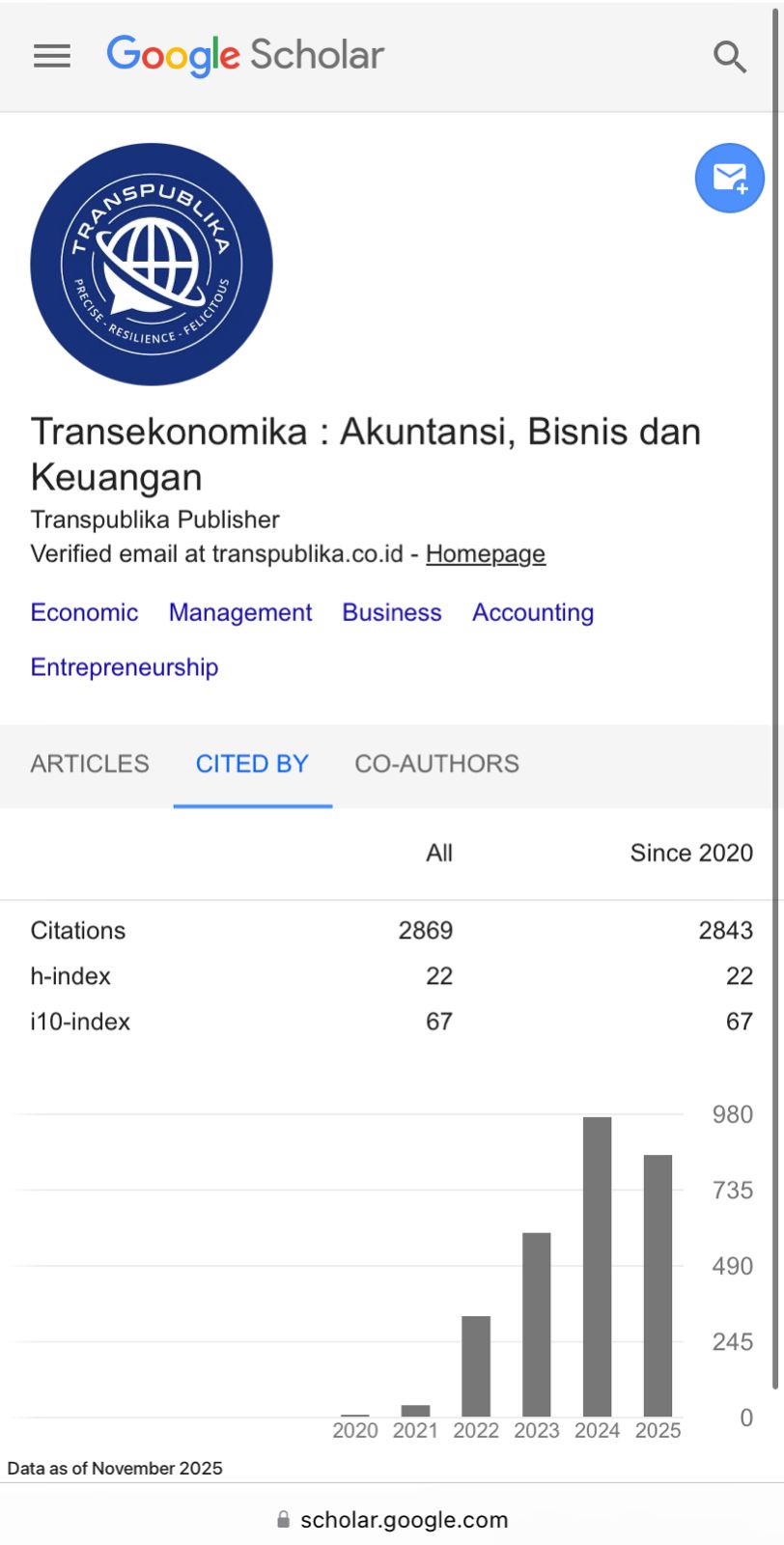KAUSALITAS JUMLAH PENDUDUK, KONSUMSI RUMAH TANGGA, URBANISASI DAN KESEJAHTERAAN MASYARAKAT INDONESIA
Abstract
The Preamble to Indonesia's 1945 Constitution declares unequivocally that the state was established to protect the whole Indonesian population, advance the public welfare, and educate the nation's citizens. The government has implemented a number of development programs with the primary goal of promoting community welfare. Nevertheless, efforts to quantify welfare continue to be a subject of study for economists. In recent years, definitions and methodologies for evaluating welfare in economic development have continued to evolve. This study examines the relationship between population, household consumption, urbanization, and community welfare, as assessed by Indonesia's per capita GDP from 1990 to 2019. This investigation use the Vector Error Correction Model (VECM) technique. According to the findings of the estimation, the variables population (JP) [-3.05594] and household consumption (KRT) [-5.17939] have a meaningful effect on people's welfare (GDP per Capita), whereas urbanization (URB) has no influence.
Downloads
References
Chauvin, J. P., Glaeser, E., Ma, Y., & Tobio, K. (2016). What is different about urbanization in rich and poor countries? Cities in Brazil, China, India and the United States. Journal of Urban Economics, 13(20), 1–33.
Gujarati, D. N., & Porter, D. C. (2009). Basic Econometrics (5th ed). McGraw-Hill Education.
Jhingan. (2016). Ekonomi Pembangunan dan Perencanaan. Rajawali Pers.
M Gufronul, A., Khalisah, Wibowo, M. G., & Salim, A. (2022). Kausalitas Urbanisasi, Indeks Pembangunan Manusia (IPM) dan Kesejahteraan Masyarakat Surabaya 2015-2020. Journal of Economic Development Issues, 5(1), 561–570.
Mankiw, N. G. (2006). Pengantar Teori Ekonomi Makro (Ketiga). Salemba Empat.
Michael P. Todaro, S. C. S. (2006). Pembangunan Ekonomi (kesembilan). Erlangga.
Mulia, R. A., & Saputra, N. (2020). Analisis Faktor-Faktor Yang Mempengaruhi Kesejahteraan Masyarakat Kota Padang. Jurnal El-Riyasah, 11(1).
Prayoga, D. B., Idris, & Ariusni. (2018). Analisis Kausalitas Jumlah Penududuk, Pertumbuhan Ekonomi, dan Kesejahteraan Masyarakat di Provinsi Jambi. Jurnal Ecosains, 8(2), 121–140.
Rostow. (1996). Pembangunan Ekonom (Ekonomi Pe). PT. Raja Grafindo Pustaka.
Suciati, Desak Ayu Putu, Made Kembar Sri Budhi, D. K. J. (2015). Pengaruh Jumlah Penduduk, Dana Perimbangan dan Investasi pada Kesejahteraan Masyarakat melalui Belanja Langsung pada Kabupaten/Kota di Provinsi Bali tahun 2007-2012. Jurnal Buletin Studi Ekonomi, 20(2), 83–93.
Sudja’i, & Mardikaningsih, R. (2021). Correlation Of Worker Welfare And Industrial Relations. CASHFLOW : Current Advanced Research On Sharia Finance And Economic Worldwide, 1(1), 29–32.
Sukirno, S. (2016). Makroekonomi: teori pengantar (Ketiga). Rajawali Pers.
Todaro, M. P. (2000). Pembangunan Ekonomi Dunia Ketiga Jilid I. Erlangga.
Todaro, M. P., & Smith, S. C. (2011). Pembangunan Ekonomi (11th ed.). Erlangga.
Yudanto, D., Rochaida, E., & Priyagus. (2020). Pengaruh pendapatan perkapita dan inflsi serta suku bunga terhadap konsumsi rumah tangga makanan dan non makanan serta pengaruhnya terhadap kesejahteraan masyarakat. Journals of Economics and Business Mulawarman, 17(2), 287–297.
Yulhendri. (2017). Analisis Konfirmatory Faktor Pengukur Indikator Kesejahteraan Rumah Tangga. Jurnal Ilmiah Econosains, 15(2).
Copyright (c) 2022 Salsabila Nurul Aini, Lucia Rita Indrawati

This work is licensed under a Creative Commons Attribution 4.0 International License.








.png)







.png)


.png)

.png)















